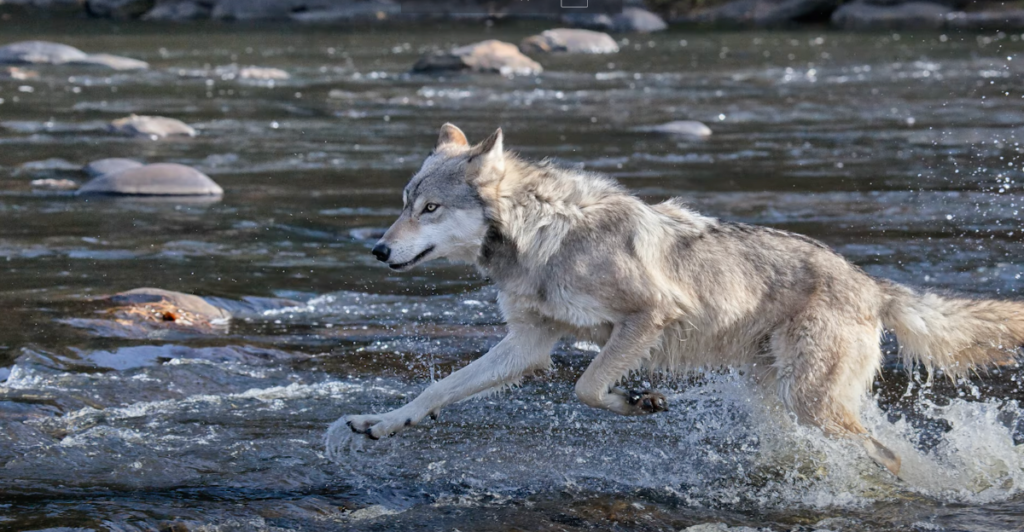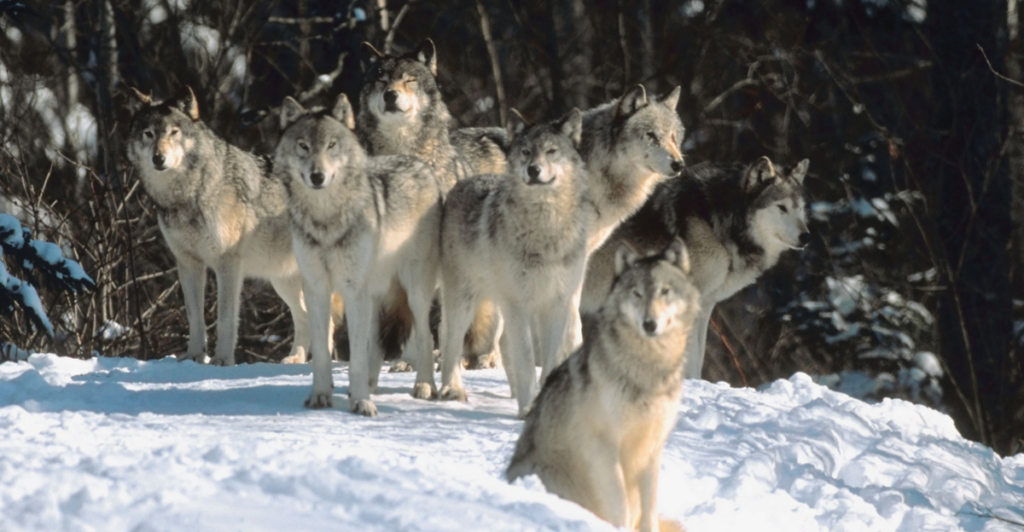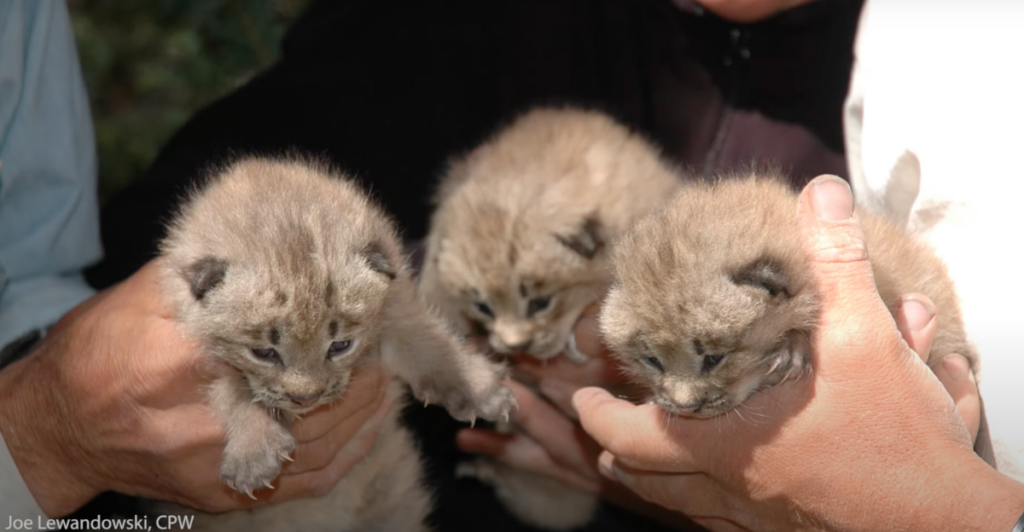
One year ago, wolves were reintroduced to Grand County, Colorado, sparking excitement and debate. The reintroduction effort followed a narrow 2020 vote by Coloradans to restore this predator to its historic range. The process, however, has faced challenges and controversy. The program has highlighted the complexities of reintroducing a keystone species into a modern human-dominated landscape, from debates about wolf selection criteria to the impact on livestock and ecosystems.
Wolves and Personality Traits

Researchers observed varying behaviors in wolves during their release, from hesitation to bold escape attempts. Experts say these differences stem from individual wolf personalities. While some argue personality diversity strengthens survival chances, Colorado Parks and Wildlife (CPW) did not consider this factor in selecting wolves, citing a lack of reliable data. This omission has fueled ongoing discussions about how personality traits might affect the success of rewilding efforts.
Community Divisions Over Reintroduction

The reintroduction of wolves has divided communities in Colorado. Farmers and ranchers, concerned about livestock losses, have been vocal opponents, while conservationists advocate for the ecological benefits wolves can bring. Historical tensions date back to the 1940s when wolves were eradicated in the state for preying on livestock. Today, efforts to balance wildlife conservation with agricultural interests remain at the heart of this contentious issue.
Selecting Wolves for Reintroduction

The selection process for Colorado’s reintroduced wolves has drawn criticism. According to some researchers, wolves were chosen based on availability rather than suitability. CPW attempted to avoid wolves with histories of livestock predation, hoping to ease ranchers’ concerns. However, critics argue this approach may not ensure long-term survival or ecological success, highlighting the challenges of reintroducing large predators into human-dominated environments.
Learning from Past Wolf Reintroductions

The 1995 reintroduction of wolves to Yellowstone National Park offers valuable lessons. Wolves played a key role in stabilizing the ecosystem, controlling prey populations, and fostering biodiversity. While the Colorado effort is in its early stages, advocates hope to replicate Yellowstone’s successes. Yet, they acknowledge that Colorado’s unique landscape and higher human presence pose additional challenges to achieving harmony between wolves and humans.
Conflicts with Livestock

Wolf-livestock conflicts have intensified tensions around the reintroduction. Reports of wolf attacks on livestock have prompted CPW to relocate packs, a decision criticized by wildlife groups as detrimental to the wolves. Research suggests relocated wolves face lower survival rates and may even resume predation in new areas. Balancing conservation goals with the needs of ranchers remains a delicate and unresolved issue.
The Role of Personality in Reintroduction

Emerging studies reveal that animal personality can influence reintroduction outcomes. Bold animals may adapt quickly to new environments, while shy individuals might avoid human conflict. Experts like Liv Baker emphasize the importance of personality diversity within reintroduced populations, arguing it enhances group resilience. However, accurately assessing personality traits in wild animals remains a significant scientific challenge.
A Test-Release Strategy

Some experts propose a phased reintroduction strategy. By first releasing wolves that are less likely to conflict with humans, communities could gradually adapt to their presence. Later, more diverse wolf personalities could be introduced to strengthen the population. This cautious approach fosters coexistence while addressing ecological and social concerns. However, it also requires careful planning and long-term commitment.
Observing Wolves in the Wild

Understanding wolf behavior in the wild is crucial but challenging. Researchers like Thomas Gable have used GPS collars to track wolves’ hunting techniques, uncovering variations that may reflect personality differences. While GPS data provides insights, Gable notes that direct observation would offer a fuller picture. Unfortunately, dense forests and remote locations limit the feasibility of such studies in many areas.
Current Status of Colorado’s Wolves

Since the initial release, Colorado’s wolf population has grown modestly. CPW reports seven surviving adults and five pups from the 2023 release. Plans are underway to introduce 15 more wolves between December 2024 and March 2025. Despite challenges, wildlife officials remain optimistic about the program’s biological achievements, though public support and logistical hurdles continue to shape its trajectory.
Ethics of Wildlife Reintroduction

The ethics of reintroduction efforts are an emerging topic. Some conservationists, like Francisco Santiago-Ávila, argue for a greater focus on the animals’ welfare and preferences. Balancing scientific objectives with ethical considerations requires nuanced discussions about human responsibility and coexistence with wildlife. Solutions like non-lethal deterrents are being explored to reduce conflicts and foster better relationships between wolves and humans.
Challenges Ahead for Colorado’s Wolves

Critics of Colorado’s wolf program warn of potential long-term failures, citing public opposition and logistical difficulties. Others remain hopeful, pointing to the program’s initial successes. For the reintroduction to thrive, experts agree that collaboration between conservationists, ranchers, and policymakers is essential. Whether the program succeeds may depend on its ability to navigate these multifaceted challenges effectively.
A Second Chance for Wolves

Despite setbacks, Colorado’s wolf reintroduction represents an opportunity for wildlife and humans. Relocated wolves, often facing death in their original habitats, are given a chance to survive and thrive in a new environment. Advocates hope this program will restore a vital predator to Colorado’s ecosystem and inspire a deeper understanding of and respect for the complex dynamics of wildlife conservation.
Stay connected with us for more stories like this! Follow us to get the latest updates or hit the Follow button at the top of this article, and let us know what you think by leaving your feedback below. We’d love to hear from you!







